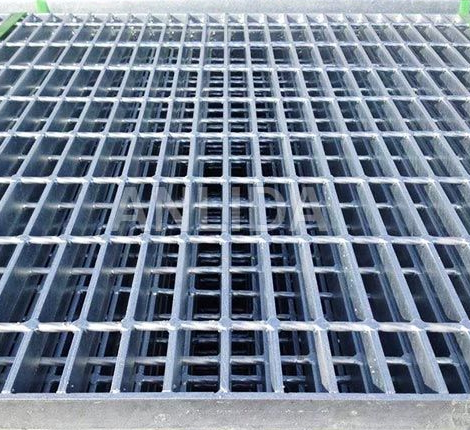Sep. 08, 2021

Buyers who need to protect metal grating from rust and corrosion have an important choice between galvanized carbon steel and stainless steel. Galvanizing is the process of applying a layer of protective zinc to the carbon steel grating. The stainless steel grating is usually finished with a secondary cleaning to ensure its beauty. Both stainless steel and galvanized carbon steel can be coated with a protective layer of a tough, anti-skid substrate for traction in extreme environments.
In this article, we will explore the difference between stainless steel grating and galvanized carbon steel grating in order to better understand where the two are appropriate. When used under the correct settings, both can be used for decades and require little maintenance.
Unprotected carbon steel is prone to rust and corrosion. This may protect the exposed carbon steel paint surface to a certain extent, but it is not as reliable as galvanizing because they will wear out over time, exposing the steel underneath. However, these may be adequate and cost-effective protection methods for indoor architectural gratings that are not exposed to water, heavy impact, or strong wear and tear. Before recommending a suitable grating for your building and site, your grating supplier should carefully evaluate the needs of your facility.
For carbon steel gratings that must be exposed to a humid environment, a layer of zinc is required to prevent the steel from rusting. This type of coating usually immerses the grating into hot, molten zinc to ensure that all surfaces are covered. An extremely thin zinc layer is tightly combined with the steel surface to form a textured protective layer.
Galvanized steel is cheaper than stainless steel, but not as strong as stainless steel. Therefore, galvanized steel gratings are ideal for most commercial and construction applications, whether indoor or outdoor, where they will not be affected by extreme loads or harsh corrosive chemicals.
By definition, stainless steel must contain at least 10% chromium. Carbon steel is mainly composed of iron and carbon, with no chromium or only a trace amount. The presence of chromium in stainless steel is what prevents it from rusting and corrosion. Unlike galvanized carbon steel, the chromium not only adheres to the surface of stainless steel, but it is also evenly mixed into the molten steel before cooling.
Stainless steel also contains other elements that help increase its strength. Although carbon steel can be designed to have a smaller deflection than stainless steel under an applied load, it cannot withstand such large stress without permanent material deformation. In engineering terms, this means that carbon steel can have a higher modulus of elasticity, but stainless steel always has a significantly higher yield strength.
All stainless steel gratings have two common characteristics: high strength and corrosion resistance. They are commonly used in industrial applications, food processing, and environments with corrosive chemicals, where it is worth spending more money to ensure higher yield strength and corrosion resistance.
We are a galvanized grating supplier, please feel free to contact us if you need them.